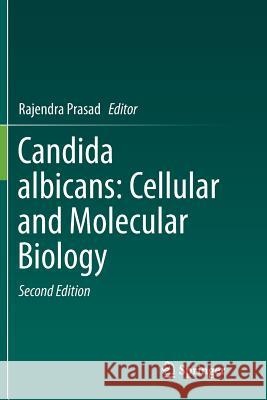Candida Albicans: Cellular and Molecular Biology » książka



Candida Albicans: Cellular and Molecular Biology
ISBN-13: 9783319843940 / Angielski / Miękka / 2018 / 554 str.
Candida Albicans: Cellular and Molecular Biology
ISBN-13: 9783319843940 / Angielski / Miękka / 2018 / 554 str.
(netto: 766,76 VAT: 5%)
Najniższa cena z 30 dni: 771,08
ok. 22 dni roboczych
Dostawa w 2026 r.
Darmowa dostawa!
Prof. Rajendra Prasad has recently joined Amity University, Gurgaon as Director of the Amity Institute of Biotechnology and Amity Integrative Sciences and Health. He is a former Professor & Dean of the School of Life Sciences at Jawaharlal Nehru University (JNU), New Delhi, where he served for 40 years in various capacities which included Chairman of Molecular Medicine and Rector (Pro-Vice-Chancellor). Holding a Ph.D. from the Central Drug Research Institute, Lucknow, Prof. Prasad has also served as a visiting professor at several universities and institutes, including the Ecole Normale Superieure – CNRS Paris, France; Catholic University, Louvain-la – Neuve, Belgium; Technical University, Valencia, Spain; Bristol Mayer Squib, Princeton, USA; University of Darmstadt, Germany; and New York Medical College, USA.
Prof. Prasad is a recipient of the Royal Society Commonwealth Bursary, Alexander von Humboldt-Stiftung Fellowship, Welcome Foundation Grant, and the Mercator Professorship at the University of Bonn. He is an elected fellow of all Indian Science Academies, a European Commission Focal Point Coordinator, and a Research Ambassador, Germany. He is also currently Vice President of the Indian National Science Academy, New Delhi.
Prof. Prasad has published over 225 research papers and has handled 50 national and international grants. He is a leading molecular mycologist and has conducted trendsetting research in the area of antifungal clinical drug resistance.
This book on Candida albicans and similar pathogens provides a timely overview of the groundbreaking discoveries made in the areas of drug resistance, host–pathogen interactions, virulence, host immune system modulation, etc., in the last two decades.
This comprehensive 2nd Edition includes chapters on fungal infections, hyphal morphogenesis, molecular mechanisms of antifungal resistance, antifungal agents, multidrug transporters, virulence mechanisms in Candida albicans, host–pathogen interactions, the cell wall, fungal biofilms, lipids and antifungal resistance, signaling mechanisms and last but not the least host-immune responses. As such, it offers an ideal reference guide for mycologists, researchers, pharmacists, clinicians, and undergraduate students engaged or interested in fungal research. It will also benefit clinicians, who are required to keep abreast of the current state of research on antifungal drug resistance and antifungal development.
1997-2025 DolnySlask.com Agencja Internetowa
KrainaKsiazek.PL - Księgarnia Internetowa









